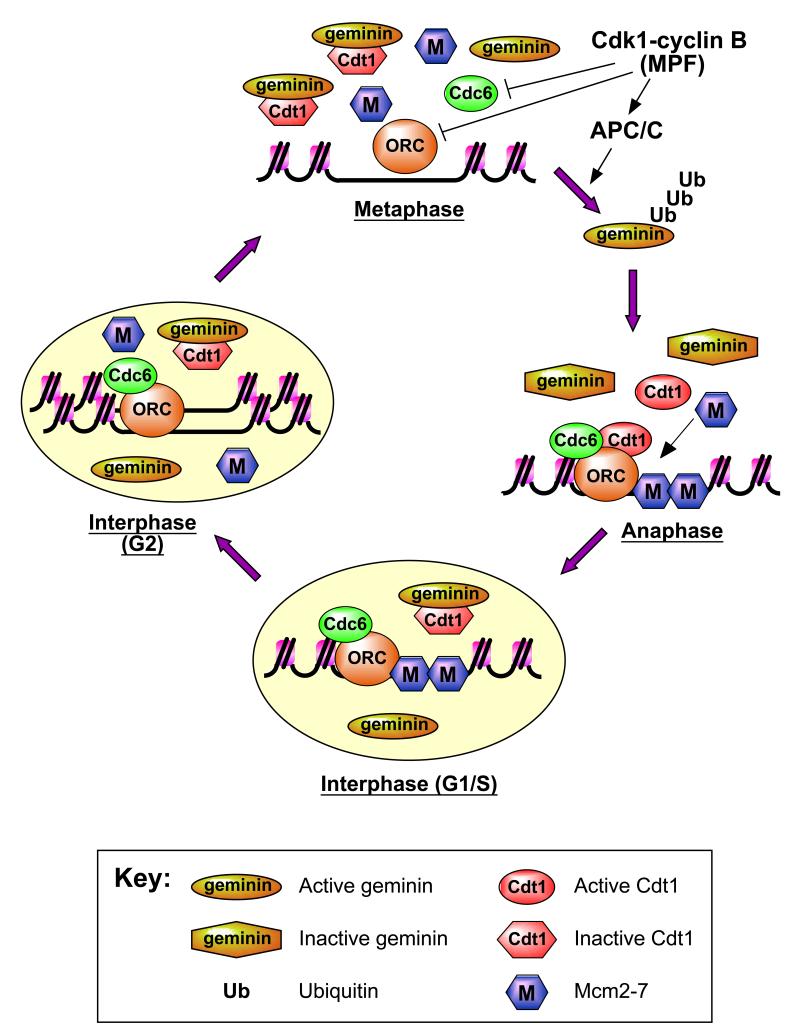Figure 1.
A small region of chromatin surrounding a single replication origin is shown. During metaphase, geminin is active and binds Cdt1, keeping it inactive. There is an excess of geminin over Cdt1, ensuring Cdt1 inhibition is complete. Geminin in combination with Cdk1 (which reduces the affinity of ORC and Cdc6 for the origin) keeps the licensing system securely repressed. On exit from metaphase into anaphase, the APC/C becomes activated, a process which also depends on Cdk1 activity. The APC/C in turn polyubiquitinates geminin. A significant proportion of the geminin is deubiquitinated without being degraded, leaving it unable to inhibit Cdt1. The subsequent loss of Cdk1 activity during anaphase (normally due to cyclin B ubiquitination and degradation) also increases the affinity of ORC and Cdc6 for the origin. Thus the licensing system becomes rapidly activated on exit from metaphase and Mcm2-7 is loaded onto origins. On exit from anaphase into early interphase (G1/S), chromosomal DNA is assembled into an interphase nucleus. Geminin is imported into the nucleus and subsequently undergoes reactivation. Therefore no further licensing can take place within the intact nucleus. During S phase, initiation takes place at licensed origins, resulting in displacement of Mcm2-7 from origins. Because of the presence of active geminin and the lack of Cdt1 activity, replicated origins cannot be re-licensed and so DNA is not re-replicated.

